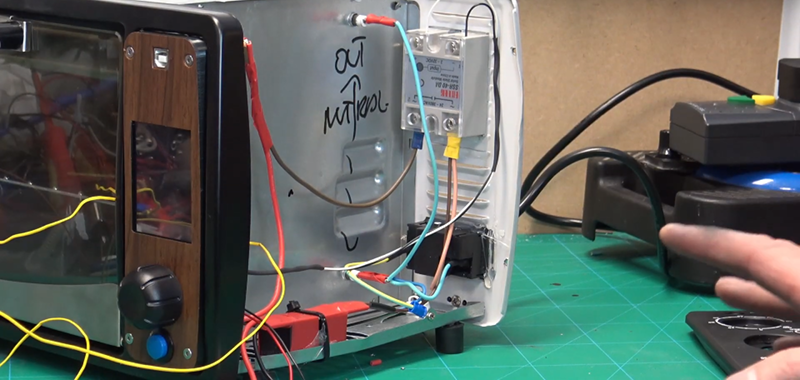[DJ Legion] decided he wanted a reflow oven so he bought a toaster oven and an assortment of parts including a solid state relay, a Teensy, a display, and a thermocouple. What makes this a different project is the amount of video documentation. The four videos below encompass about 50 minutes of information and he’s promising more to come.
We haven’t found his software — probably because he’s still working on it, but we’re watching his GitHub page expectantly. We really liked the 3D printed faceplate that integrated the controller into the oven. It almost looks like a commercial unit. The use of the woodgrain paper over the 3D printed parts was a nice touch.
[DJ] is not done, though. He wants to increase the heat up time and possibly add convection. He’s also planning on a new video that will show actually making a board and how he has refined the calibration curves.
We are impressed but would have been tempted to just grab a Reflowduino. The work’s already done, and you get wireless control and lots of other goodies. Of course, we also get the urge to do it yourself, so we can’t really throw stones. If you don’t want to mess with an oven, you can always raid the hair salon.















I see a Fotek SSR. I would replace that with a better part. They are not known for their safety or reliability.
I don’t know if the genuine Fotek SSRs are bad, but the counterfiet ones out on the market are *NASTY*.
Came here to say this, there are some good teardown videos on youtube cataloguing the issues with cheaps/clones/fakes.
It makes sense to plug previous articles on the same topic, but this is HACKaday. Can’t we just celebrate the hack without promoting a polished product as more attractive?
I can only speak for myself, but I’m much more interested in the hack.
I think an awful lot of this is just overkill. I love the one guy on youtube that just used an unmodified toaster oven and got very good results. Of course he had to pay attention but really, unless you spend a lot of time making one off boards I am not sure all the added hoopla gets you much further down the road. I think the reason so many people hack toaster ovens for reflow is because it is such a low hanging piece of fruit.
I have had very good results with a simple toaster oven but I have to watch it closely and can not nudge parts around if they are not positioning well. I have switched to one of these hot-plates out of china. Originally made for delaminating LCDs for repair. It works really well plus I can even watch it under a microscope. One like this https://www.ebay.com/itm/Electronic-Hot-Plate-Preheat-Preheating-Station-800W-200-200-20mm-Soldering-Work/233108760665?hash=item36465d6859:g:EOcAAOSw22pcSu9O
I found that what you want is a convection oven, not just a toaster oven. I used an Oster countertop oven that I bought in a thrift store for $7 (smelled like grilled cheese sandwiches). The temperature dial is wildly inaccurate so I used a thermocouple and a DMM and rode the on/off knob manually to duplicate the recommended profile on Kester’s website. I probably ran at least 40 or 50 boards through it at that job and only had one come out less than perfect.
I can appreciate the effort of any of the hacks while also appreciating the the more polished products. I don’t always have to time to mess around with hacks, so the links are helpful.